#pakistan in the 90s
Explore tagged Tumblr posts
Text


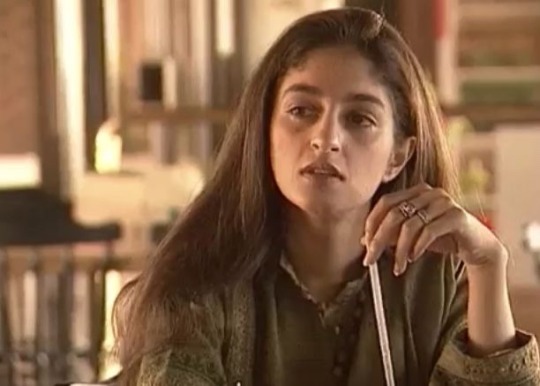
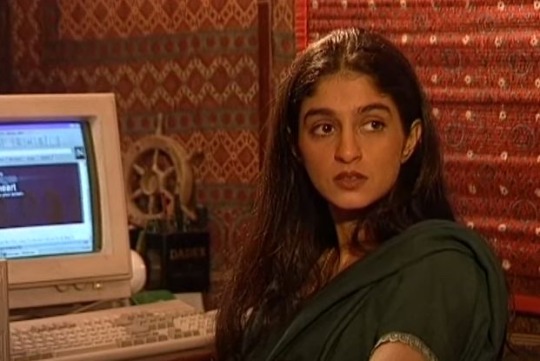


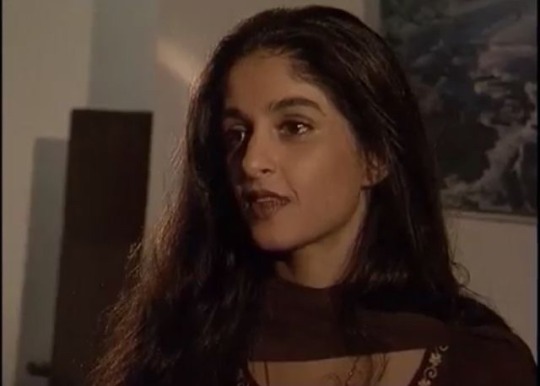

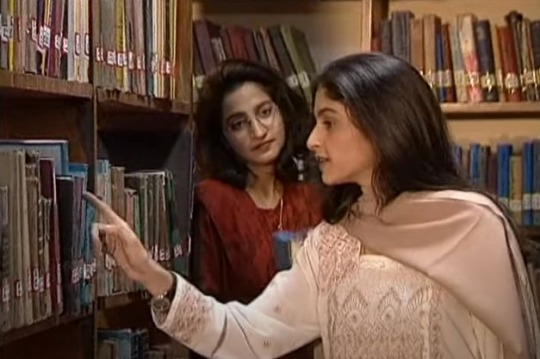
I just think that Nadia Jamil in the 90s
#Nadia Jamil#Pakistani#pakistan in the 90s#old Pakistani dramas#desi#desi fashion#pakistan#desiblr#pakistani culture#pakistani dramas#pakistani cinema#ptv#80s to early 00s#old lollywood#old Pakistani celebrities#desi women#desi teen#desi tag#desi tumblr#desi aesthetic#desi academia#desi dark academia#desi culture#desi things#pakistani actors#dark academia#dark moodboard#desi moodboard#light academia moodboard
185 notes
·
View notes
Text
instagram
Sun-kissed soul, golden hour glow, and a melody that whispers of stolen glances. A whirlwind of laughter and moments suspended in time. 🌅✨
This reel is a love letter to the carefree days, a reminder to dance with life's simple joys. 💛
#rabia butt#team rabia butt#actress#pakistan#pakistani drama#pakistanidrama#desi tumblr#desi tag#desiblr#desi aesthetic#desi academia#desi things#bollywood#indian cinema#bollywood movies#cinema#bollywood songs#90s bollywood#indian tumblr#old bollywood#desi romance#self love#be yourself#beautiful#beautiful eyes#beauty#gorgeous#nostalgia#80s#90s kid
10 notes
·
View notes
Text

Arshad Cinema, Khyber Bazaar, Peshawar, Pakistan 1994.
10 notes
·
View notes
Text
















Victorian era clothes, but they are made of #denim.
#denim#denim jeans#denim jacket#denim girls#victorian era#indian#pakistan#cuban#english#british#ai photo#ai generated#fashion photography#90s fashion#chinese#japanese#african#traditional clothing#victorian fashion
5 notes
·
View notes
Text
Both have opposed Iranian nuclear ambitions but they did let Iran apply to join their Shanghai Cooperation Organization,* a loose body working together to counter American interests in central Asia.
*Formed by China, Kazakhstan, Kyrgyzstan, Russia, Tajikistan, and Uzbekistan in 2001 out of a 1996 "Shanghai Five" that did not include Uzbekistan. Pakistan has also expressed interest in joining.
"Why the West Rules – For Now: The patterns of history and what they reveal about the future" - Ian Morris
#book quotes#why the west rules – for now#ian morris#nonfiction#russia#china#iran#nuclear weapons#nuclear power#shanghai cooperation organization#central asia#kazakhstan#kyrgyzstan#tajikistan#uzbekistan#00s#2000s#21st century#90s#1990s#20th century#pakistan#united states
0 notes
Text
Derma Shine Sunblock SPF 90 100ML

Derma Shine Sunblock SPF 90 100ML in Pakistan
Derma Shine Sunblock SPF 90 100ML in the bustling markets of Pakistan, where the sun’s rays can be relentless, finding the perfect sunblock becomes imperative. Among the myriad options available, Derma Shine Sunblock SPF 90 100ML emerges as a beacon of protection and skincare. In this article, we delve into the features, benefits, and significance of this skincare essential in the Pakistani context.
Derma Shine Sunblock SPF 90 100ML: A Shield Against Sun Damage
Formulated to provide superior protection against both UVA and UVB rays, Derma Shine Sunblock SPF 90 in Karachi offers a high level of defense against sunburn, premature aging, and skin cancer. With its broad-spectrum coverage, it ensures that your skin remains shielded from the damaging effects of prolonged sun exposure.
Key Features
High SPF: The SPF 90 rating ensures robust protection against UV radiation, making it ideal for the intense Pakistani sun.
Broad-Spectrum Protection: Derma Shine Sunblock guards against both UVA and UVB rays, safeguarding the skin from sunburn and long-term damage.
Lightweight Formula: The formulation is lightweight and non-greasy, allowing for comfortable wear throughout the day.
Moisturizing Properties: Enriched with moisturizing agents, it helps hydrate the skin, preventing dryness and maintaining a healthy complexion.
Non-Comedogenic: The sunblock is non-comedogenic, meaning it does not clog pores, making it suitable for all skin types, including sensitive and acne-prone skin.
Water-Resistant: Its water-resistant formula ensures long-lasting protection, making it suitable for outdoor activities and humid climates.
Benefits of Derma Shine Sunblock SPF 90
Superior Protection: The high SPF provides superior protection against sun damage, reducing the risk of sunburn and premature aging.
Prevents Hyperpigmentation: Regular use of Derma Shine Sunblock helps prevent the development of hyperpigmentation and dark spots caused by sun exposure.
Anti-Aging Benefits: By shielding the skin from UV radiation, this sunblock helps delay the signs of aging, such as fine lines and wrinkles.
Hydration and Nourishment: The moisturizing properties of the sunblock keep the skin hydrated and nourished, enhancing its overall health and appearance.
Versatile Use: Whether for daily wear or outdoor activities, Derma Shine Sunblock offers versatile protection against the sun’s harmful rays.
Skin Compatibility: Its non-comedogenic and hypoallergenic properties make it suitable for all skin types, ensuring broad accessibility and effectiveness.
Significance in the Pakistani Context
In Pakistan, where sun exposure is often unavoidable, the importance of sun protection cannot be overstated. The intense sunlight, coupled with the country’s geographical location, makes individuals susceptible to various skin issues, including sunburn, pigmentation, and skin cancer. Derma Shine Sunblock SPF 90 addresses these concerns effectively, offering a reliable solution for protecting and nurturing the skin.
Furthermore, the lightweight and non-greasy formula of Derma Shine Sunblock makes it well-suited for the Pakistani climate, where heat and humidity prevail for a significant part of the year. Its water-resistant properties ensure that individuals can enjoy outdoor activities without compromising on sun protection.
Derma Shine Sunblock SPF 90 100ML: The Preferred Choice in Pakistan
In Pakistan, where the sun’s intensity can be particularly unforgiving, Derma Shine Sunblock SPF 90 100ML in Lahore has earned a reputation as the go-to sun protection solution for many. Its effectiveness in guarding against sun damage, coupled with its lightweight and non-greasy formula, has made it a favorite among consumers.
Moreover, Derma Shine Sunblock is dermatologist-tested and free from harmful chemicals, making it safe for daily use. This assurance of quality and safety further enhances its appeal among discerning consumers who prioritize both efficacy and skin health.
Conclusion
Derma Shine Sunblock SPF 90 100ML in Pakistan stands out as a beacon of sun protection in the diverse landscape of skincare products available in Pakistan. With its advanced formulation, high SPF rating, and versatile benefits, it offers comprehensive protection against the harmful effects of UV radiation. By incorporating Derma Shine Sunblock into their skincare regimen, individuals can safeguard their skin against sun damage, maintain a youthful complexion, and embrace radiant protection in the Pakistani sun.
#Derma Shine Sunblock SPF 90 100ML in Islamabad#Derma Shine Sunblock SPF 90 100ML in Karachi#Derma Shine Sunblock SPF 90 100ML in Lahore#Derma Shine Sunblock SPF 90 100ML in Pakistan#Derma Shine Sunblock SPF 90 100ML in Peshawar#Derma Shine Sunblock SPF 90 100ML in Rawalpindi#Derma Shine Sunblock SPF 90 100ML Price in Islamabad#Derma Shine Sunblock SPF 90 100ML Price in Lahore#Derma Shine Sunblock SPF 90 100ML Price in Pakistan#Derma Shine Sunblock SPF 90 100ML Price in Peshawar#Derma Shine Sunblock SPF 90 100ML Price in Rawalpindi
0 notes
Text
Vintage Rawalpindi: A Glimpse Into the City's Timeless Elegance

GT Road, also famously well known as Grand Trunk Road
#Rawalpindi in the 90s
#rawalpindi#Rawalpindi#Saddar#rawalpindi city#rawalpindi architecture#GT road#gt road#grand trunk road#90s#vintage#vintage photography#vintage moodboard#pakistan#vintage pakistan#90s pakistan#rawalpindi heritage#pindi#rawalpindi aesthetic#old pakistan#purana pakistan#retro#retro pakistan
1 note
·
View note
Text
Sen Rand Paul Breaks Down the of $1 Trillion in Government Waste, let’s look at some of the insanity…
- $10 billion on maintaining, leasing, and furnishing mostly empty buildings
- $12 Million on a Las Vegas Pickleball Complex
- $3 Million for ‘Girl-Centered Climate Action’ in Brazil
- $10,851,439 on Orwellian cat experiments
- $4,840,082 on Ukrainian influencers
- $20 million on “Ahlan Simsim” a new Sesame Street show in Iraq
- $365,000 to promote circuses in city parks
- $90 billion on ineffective Navy LCS vessels
- $873,584 for movies in Jordan
- $288,563 to Ensure Bird Watching Groups Have Safe Spaces
- $20 million on the Fertilize Right initiative to advance fertilizer use in Pakistan, Vietnam, Colombia, and Brazil
- $2.1 million for Paraguayan Border Security
- $10,000 grant for ice-skating drag queens
- $892 billion in fiscal year 2024 on the interest on Uncle Sam’s Credit Card
It has been happening for decades 🤔
#pay attention#educate yourselves#educate yourself#reeducate yourselves#knowledge is power#reeducate yourself#think about it#think for yourselves#think for yourself#do your homework#do research#do some research#do your own research#ask yourself questions#question everything#government corruption#government secrets#government waste#lies exposed#news#crimes against humanity#theft#government thieves#evil lives here
354 notes
·
View notes
Text
Is "hijra" a slur? Contextualizing South Asian (trans)misogyny
A note on the sheer cultural diversity of the subcontinent
There is no realistic way for me to exhaustively examine the context of every South Asian transfeminized population (though believe me, I’d like to). As such, I’m going to limit my scope to India, but make a quick initial note about Pakistan and Bangladesh.
Pakistani transfeminized communities, according to my partner’s sisters who are in the community, do consider ‘hijra’ more derogatory than their Indian counterparts necessarily do and refer to themselves as part of the ‘khwaja sira’ community.
I have sadly not been able to speak to any transfeminine people from Bangladesh, but I have spoken to cis queers who have told me that they use ‘hijra’ in a manner similar to India.
If there are desi queers from those communities who would like to add their perspectives, please feel free to reblog. And for the South Asian communities I haven't mentioned (such as Sri Lanka), please feel free to add your perspectives too! I'm curious to hear from you all.
Etymology and Usage
‘Hijra’ in its meaning and usage amongst the cis is most similar to the word ‘naamard’ (NAH-murd). The ‘naa’ is prefixal, a negation akin to ‘non’, while ‘mard’ is the word for ‘man’. It is a way of unmanning a man, of calling him lacking in the essential quality of manhood, of labelling him, in spirit if not in body, impotent.
As such, you can see how it’s an implicitly third-sexing construction (even before you account for how these communities are explicitly third-sexed, denied the epistemic autonomy to be recognized as women and now third-sexed by law). When Nanda called them emasculated homosexuals, it was not far off from how Indian culture forcibly categorizes and marginalizes them.
Members of the community have told me about their frustration and anger at being referred to as such, even though the word has now become a term through which they organize the community and sometimes advocate for themselves, a political reality that does not inherently contradict their campaigns to be recognized as women, and allowed to self-ID as such. (Recall, the Indian government currently mandates legal third-sexing of the hijra: they must first obtain a “Trans Certificate” and be documented as a third sex before they initiate the process of being recognized as women—a process that is contingent on subjecting themselves to transmedicalist scrutiny and gatekeeping!)
Others, however, have pointed out to me that the term is undergoing a process of reclamation. The term ‘hijra’ has a certain degree of legibility in Indian society even as it is a pejorative with degendering and dehumanizing connotations. It is being reclaimed intracommunally, but also by allies who speak of them without the usual stigmatizing connotations that cis society has saddled the term with.
Even still, I have also been told that the manner in which cis and especially Western academics use the term in scholarship—and I’m quoting here—"makes me want to tear my skin out". The fictions of “recognized gender role in Indian society” and “oppressed only after colonialism” are further simplifications and fabrications that obfuscate the role South Asian ruling-class collaborators eagerly played in petitioning for those colonial-era laws, and ignore such easily available empirical evidence as the Manusmriti mandating punishments for anyone who sleeps with—ugh—“eunuchs”.
Conclusion
In sum, I’d liken the use of the word “hijra” as analogous to the usage of “queer” in the 90s, as a slur in the contentious, contextual process of being reclaimed. As Aruvi put it to me on Bluesky:

We cannot allow cis people to dictate the discursive and epistemic terms of transfeminine culture. At the same time, the term “hijra” still carries with it heavy baggage due to South Asian transmisogyny as well as the academic misrepresentations and epistemic extractivism that Western scholarship has subjected South Asian transfeminized demographics to.
If you want to know how best to use the term, try to do so without third-sexing, and without promulgating fictive ideas of South Asian cultures being “gender-expansive” and “recognizing more than two genders”. Erasing the marginalization of the hijra is endemic to the way the term is used in the West, and that must absolutely be combatted.
On a final, personal note, I also wish to clearly state that I do not reject the label ‘hijra’ because I consider myself essentially different from them. Many Indian (usually upper-caste) trans women wish to distance themselves from the hijra, as though reproducing our society’s disgust for them will spare them from the same fate. That is not an attitude I share, or wish to normalize. The hijra—both those who affirmatively identify with the term, and those who wish to distance themselves from it—are my sisters.
I have simply not been granted the honor of being part of the communities and kin structures, and I do not wish to appropriate their struggles out of respect. Even still, their struggles are and will always be mine.
#transfeminism#materialist feminism#gender is a regime#sex is a social construct#social constructionism#feminism#third sexing#degendering#hijrah#hijra#transmisogyny#racialized transmisogyny#academic transmisogyny#queer history#queer politics#queer studies#queer theory#transphobia#transgender#trans rights
253 notes
·
View notes
Text
i've been reading about the case of asia bibi and it got me thinking how pakistani christians' oppression is also rooted in casteism in addition to religious discrimination.
christians make up roughly 1.6% of pakistan's population. 90% of christians are also dalit. despite having a small population, pakistani christians make up 80% of sanitation workers. this is rooted in the belief that lower castes such as dalits should perform "unclean" jobs.
these sanitation workers are paid meagre wages with no benefits. on top of that they also face abuse from people who look down on them as "unclean". which is again, rooted in casteist beliefs that dalits are "polluted". like the case of shafique masih, who was cast out by even his own relatives for his job as a sanitation worker. he's only one of the many sanitation workers who face discrimination on the basis of both religion and caste in pakistan.
the case of asia bibi, one of the most famous blasphemy cases in pakistan, started after she stopped to take a drink of water with a cup she found lying near the well. this angered a neighbour of hers who told her that it was "forbidden" for christians and muslims to drink from the same cup and that by touching the cup, she had made it "unclean".
this echoes the notion of untouchability, that lower castes and upper castes mustn't use the same utensils lest those utensils become "unclean" or "polluted". i'm going to quote the below article which summarizes perfectly the casteism aspect of the asia bibi case
In fact, even the case of Asia Bibi – the Christian woman who was accused of blasphemy, sentenced to death and then acquitted by the Supreme Court on October 31, resulting in protests across Pakistan – has at its essence the continuation of caste hierarchy. In Punjab, Christianity is frequently referred to as a caste as well as a religion, and many Muslims refuse to share utensils with Christians. It was Asia Bibi’s use of a utensil that led to an altercation with her Muslim neighbours, which eventually resulted in the alleged blasphemy. While the case led to a global discussion about Pakistan’s blasphemy laws, the caste hierarchy and discrimination based on it received no attention.
there is a misconception that casteism is purely a hindu concept and other religions are free of it. however casteism is deep rooted in both indian and pakistani societies, regardless of religion. whether it be hindu, muslim, christian, or even atheist, the caste system is alive and manifests in violent ways, infused with these religions. for example, upper caste pakistani muslims argue that lower caste hindu and christian minorities eat "haram" food to justify their oppression of them
so denying the existence of casteism in modern times or painting it as a hindu only aspect does a disservice to lower caste these lower caste minorities in pakistan oppressed by upper caste muslims, both on the basis of religion and caste.
357 notes
·
View notes
Text
Since this doesn't appear to have been specified in Nona the Ninth, I'm making a poll:
The main requirement for this is that it has to be a country with nuclear weapons, and since that's a very short list, I've just included all of them as poll options. (Data from here.) The book also says that it was a "major country" which probably makes some of these unlikely, but I decided to include them anyway for those of you who wanted a vanilla extract option (or who knows, maybe North Korea is somehow considered a "major country" by this time this story happens). Keep in mind that the number of nukes has decreased a lot since the Cold War and may continue to decrease in the future rather than increase depending on the political situation, etc.
118 notes
·
View notes
Text
Here are my thoughts on Harry and Meghan's pseudo-royal tour. It's simply an ego tour. Being black and of Cameroonian origin but having 40% Nigeria like many because it was a vast kingdom.
Where was the history of Nigeria?
Why are soldiers injured? why we don't see Harry and Meghan wearing African designers (ah yes product placement)
Stop with these superlatives Nigeria fell in love with Harry and Meghan lol this obsession with being chosen by Africa as saviors or kings shows how uneducated they are and that their team is white!!!!
Taking selfies does not mean being adored or being better. It shows that in 2024 Harry and Meghan still don't understand the definition of being royal!!!!!
It was all about their ego...
In this little game they will lose in the medium term. Making countries black African and playing egotistical or talking about Diana as if Africa were staying in the 90s. Will turn against them. They are so obsessed with them and being in competition with the BRF (in their heads) they are going to look like walking idiots.
There are so many details that show that are lost.
I stop here.
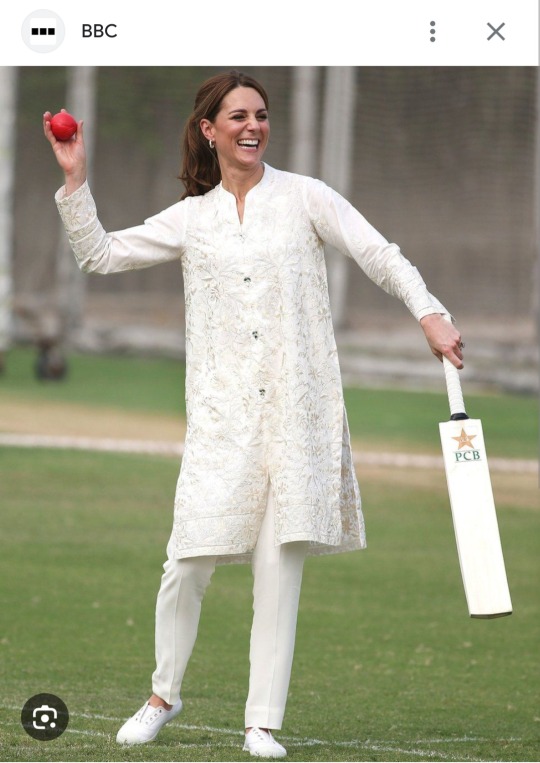

William et Catherine au Pakistan
63 notes
·
View notes
Note
Shout out to my uncle in Florida who came here from Pakistan in the 90s and made it to citizenship and voted for Trump. You are a Muslim immigrant YOU DUMB MOTHER FUCKEEEEEEER
Bless you RFS. Going to make it through together.
No one hates immigrants more than one that just got their citizenship! On their way in they wanna shut the door behind them!
15 notes
·
View notes
Text

Italian company converts discarded fishing nets into chairs, car mats and Prada bags
Since 2009, Giulio Bonazzi, the son of a small textile producer in northern Italy, has been working on a solution: an efficient recycling process for nylon. As CEO and chairman of a company called Aquafil, Bonazzi is turning the fibers from fishing nets – and old carpets – into new threads for car mats, Adidas bikinis, environmentally friendly carpets and Prada bags.
For Bonazzi, shifting to recycled nylon was a question of survival for the family business. His parents founded a textile company in 1959 in a garage in Verona, Italy. Fifteen years later, they started Aquafil to produce nylon for making raincoats, an enterprise that led to factories on three continents. But before the turn of the century, cheap products from Asia flooded the market and destroyed Europe’s textile production. When Bonazzi had finished his business studies and prepared to take over the family company, he wondered how he could produce nylon, which is usually produced from petrochemicals, in a way that was both successful and ecologically sustainable.
The question led him on an intellectual journey as he read influential books by activists such as world-renowned marine biologist Sylvia Earle and got to know Michael Braungart, who helped develop the Cradle-to-Cradle ethos of a circular economy. But the challenges of applying these ideologies to his family business were steep. Although fishing nets have become a mainstay of environmental fashion ads—and giants like Dupont and BASF have made breakthroughs in recycling nylon—no one had been able to scale up these efforts.
For ten years, Bonazzi tinkered with ideas for a proprietary recycling process. “It’s incredibly difficult because these products are not made to be recycled,” Bonazzi says. One complication is the variety of materials used in older carpets. “They are made to be beautiful, to last, to be useful. We vastly underestimated the difficulty when we started.”
Soon it became clear to Bonazzi that he needed to change the entire production process. He found a way to disintegrate old fibers with heat and pull new strings from the discarded fishing nets and carpets. In 2022, his company Aquafil produced more than 45,000 tons of Econyl, which is 100% recycled nylon, from discarded waste.
More than half of Aquafil’s recyclate is from used goods. According to the company, the recycling saves 90 percent of the CO2 emissions compared to the production of conventional nylon. That amounts to saving 57,100 tons of CO2 equivalents for every 10,000 tons of Econyl produced.
Bonazzi collects fishing nets from all over the world, including Norway and Chile—which have the world’s largest salmon productions—in addition to the Mediterranean, Turkey, India, Japan, Thailand, the Philippines, Pakistan, and New Zealand. He counts the government leadership of Seychelles as his most recent client; the island has prohibited ships from throwing away their fishing nets, creating the demand for a reliable recycler. With nearly 3,000 employees, Aquafil operates almost 40 collection and production sites in a dozen countries, including four collection sites for old carpets in the U.S., located in California and Arizona.
#solarpunk#solarpunk business#solarpunk business models#solar punk#reculture#fishing nets#materials innovation#circular#waste#italy
25 notes
·
View notes
Text

A devastating rail crash that left almost 300 people dead has refocused international attention on the importance of railways in the lives of Indians.
Indeed, to many Western observers, images of men and women crammed into overcrowded cars serve as a metaphor for modern India. Take, for example, a report by German newspaper Der Spiegel on India’s population surpassing China’s. Published just weeks before the accident in Odisha province on June 2, the now much-criticized cartoon depicted a shabby Indian train crammed with passengers rushing past a streamlined Chinese train with only two people in it.
Where does this enduring image in the West of Indian railways – and of India – come from? As a scholar of Indian history and author of 2015 book “Tracks of Change: Railways and Everyday Life in Colonial India,” I believe the answers lie in the gigantic infrastructure projects of the 19th century – forged at the intersection of colonial dictates and capitalist demands.
---
A carrier of freight, not people
Railways remain the backbone of passenger traffic in India, transporting some 23 million people daily. In the pre-pandemic 2018-19 financial year, 7.7 billion passenger journeys in India. [...] Yet, when first planned in the 1840s, India’s railways were intended to primarily transport freight and livestock, not people. Indians were thought unlikely to become railway passengers by directors of the English East India Co., a merchant monopoly that gradually annexed and administered large parts of India under U.K. crown control. [...] However, early colonial railway policy was driven by pervasive Orientalist imaginings of a people rendered immobile by poverty, living in isolated villages [...]. The trope interlocked with colonial thinking that railways would foster greater industrialization which in turn would further a capitalist economy. They also aligned with the practical needs of a colonial trading monopoly which needed raw materials for English industries, such as cotton, to be moved swiftly and efficiently from India’s interiors to port towns [...].
---
Despite the doubters, the new Indian railways attracted an increasing number of passengers. The half-million passengers recorded in 1854 when tracks became operational increased to 26 million in 1875. By 1900, annual passenger figures stood at 175 million and then almost trebled to 520 million by 1919-20. By the time of the partition of India in 1947 it had risen to more than 1 billion passenger journeys annually. Indeed, images of overcrowded trains came to epitomize the upheaval of partition, with the rail system used to carry swaths of uprooted peoples across the soon-to-be Pakistan-India border. Third-class passengers, overwhelmingly Indians, comprised almost 90% of this traffic. These escalating figures did not, however, generate a lowering of fares. Nor did they result in any substantial improvements in the conditions of [...] travel. [...]
---
The generally British railway managers seemed disinclined to remedy systematic overcrowding, which included transporting passengers in wagons meant for livestock. Rather, they insisted that such overcrowding was caused by the peculiar habits and inclinations of Indian passengers: their alleged [...] inclination to follow one another “like sheep” into crowded carriages. These attributes were soon rendered into a more public narrative, especially among Western mindsets. Journalist H. Sutherland Stark, writing for the industry publication Indian State Railways Magazine in 1929, stated that though “unversed” in railway administration and traffic control, he knew railway facilities were not the problem. Rather, Indian passengers lacked the mental preparedness, “self-possession” and “method” necessary to travel like “sane human beings.” Stark suggested passenger education as a solution to the perceived problem, making railway travel a tool for “self-composure and mass orderliness.” [...]
---
More than a century later, this depiction endures, though, ironically, it now serves as a foil to understanding contemporary India. In a piece published in The New York Times on March 12, 2005, the author lauded the then-new Delhi metro, emphasizing that it had “none of the chaotic squalor of hawkers and beggars that characterizes mainline railroads in India, nor do desperate travelers hang from the sides of the trains.” As the debate rages on whether safety has taken a back seat to “glossy modernization projects” in India – early analyses suggest signaling failure might have caused June 2, 2023, accident – railways continue to represent India’s history.
In the heyday of empire, they were deemed the technology through which Britain would drag India into capitalist modernity. In 1947, they became a leitmotif for the trauma of the partition that accompanied the independence of India and Pakistan. As the coverage of Odisha accident reminds us, it continues to be a metaphor in the West for evaluating contemporary India.
---
Headline, image, caption, and all text above by: Ritika Prasa. “Overcrowded trains serve as metaphor for India in Western eyes -- but they are a relic of colonialism and capitalism.” The Conversation. 9 June 2023. [Bold emphasis and some paragraph breaks/contractions added by me.]
157 notes
·
View notes
Note
Do you think people hate Israel because it’s one of the easiest way to prove they’re virtuous? easy to throw jews under the bus to prove you’re a good person, while racists in all political spectrum/countries support Palestine simply so they can get excused of who they are being racist towards to prove they’re still good people
(Btw I’m pro Palestrina I just noticed a pattern)
"Do you know why we, the Palestinians, are famous? Because you [an Israeli interviewer] are our enemy. Interest in the Palestine question comes by way of interest in the Jewish question. It's you they're interested in, not me. If our war had been with Pakistan, no one would have heard of me. So we are unlucky that our enemy is Israel, which has so many sympathizers in the world, and we are lucky that our enemy is Israel, because Jews are the center of the world. You have given us defeat and renown." --Mahmoud Darwish, 1996
Among the reasons why Palestinians have made no real gains for themselves in a century is because they have next to no actual allies. People are eager to bash Jews alongside them, but actually building up Palestinians in a positive way requires a level of care that almost nobody actually extends to them. Of the few that do, nearly all are guilt-riddled left-wing Jews.
Hating and demonizing Israel (and the half of all Jews who live there and the near-90% of Jews who are some degree of okay with it) gives all the primal, limbic glee of attacking Jews but now shielded against social consequences.
118 notes
·
View notes